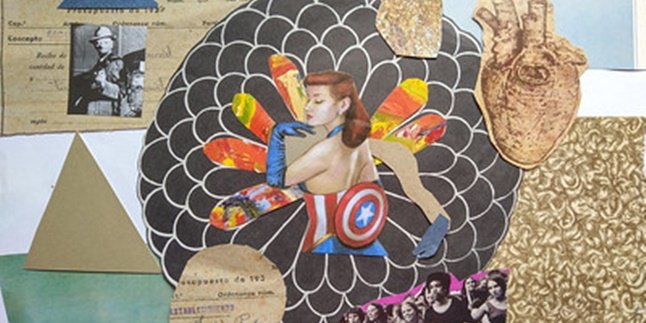Kapanlagi.com - Literary works, especially those in prose form such as short stories, novels, or drama scripts, will never be separated from intrinsic elements. The existence of these elements in literary works is very important. Without these elements, a work will be incomplete and cannot be fully enjoyed.
Understanding intrinsic elements is not only important for writers, but also for readers. By understanding what intrinsic elements are, readers will find it easier to enjoy, digest, and extract values from the work. Indeed, intrinsic elements are so important in a prose work. Intrinsic elements will build a complete, strong, and convincing story.
So, what are the intrinsic elements classified as in literary works? Summarized from various sources, here is the review.
1. Theme

(credit: freepik)
One important element in literary works is the theme. Generally, the theme is the main idea that serves as the basis of the story in short stories or novels. Before starting to write, authors usually determine the theme of their work. In a literary work, the theme often touches on everyday life situations.
In a work, the theme is very important as it becomes the foundation of the story.
The theme addressed by the author can be manifested in several forms. One of them is through characters, thoughts, and behaviors of the characters. Additionally, themes are often portrayed through conflicts presented in the story. Sensitivity of the reader is crucial in determining the theme of a literary work.
2. Message
Literary works are not only entertaining but also contain values or life lessons that can be learned. These life lessons are called messages. Similar to themes, readers need to be sensitive in order to extract the message from a story.
As an intrinsic element, messages in literary works are often implicitly presented. However, it is not impossible for authors to directly convey explicit messages as part of the story.
3. Character

(credit: freepik)
Stories in novels or short stories always tell the conflicts in a character's life. This means that the presence of a character in a story is very important. Characters become figures that bring the story to life. In other words, there is no story that can run without characters.
Interestingly, now in a story, characters don't always have to be human. Characters can be animals like in fables, or even inanimate objects that are made to appear alive like humans. In literary works, we know that there are 3 types of characters, namely protagonist characters, antagonist characters, and tritagonist characters.
4. Characterization
The presence of characters in a story will not be complete without characterization. Characterization is an intrinsic element that shows the character or personality of a character in a story. Characters in a story will be made as realistic as possible, according to the characters or individuals that actually exist in everyday life. Because of that, the story will feel more real.
The characterization of a character will also determine whether a character falls into the category of protagonist, antagonist, or tritagonist. The protagonist character is the main character who supports the plot of the story. Meanwhile, the antagonist character is the character that opposes the plot of the story. On the other hand, the tritagonist character becomes a mediator figure.
5. Plot or Storyline

(credit: freepik)
In order to attract readers, a story in a literary work must have a plot or storyline. The plot is a series of scenes that build the story as a whole. To captivate readers, the plot must not be monotonous.
In a novel or short story, the plot usually consists of several parts, including exposition or introduction, rising action, climax, anti-climax, and resolution. In addition, based on the timeline of the storytelling, the plot is also divided into three types: linear plot, flashback plot, and mixed plot.
6. Setting
The element of setting plays an important role in strengthening the story in a literary work. Setting is the background that describes the moment when a scene of the story takes place. With the setting, the story will feel stronger and more convincing because it is in accordance with reality. In a story, the setting is divided into three types: place setting, time setting, and atmosphere setting.
7. Point of View

(credit: freepik)
Point of view is the seventh intrinsic element. Point of view is closely related to the way the author tells the story. Point of view also shows the opinions or feelings of the characters in the story when they face their problems. In literature, point of view is divided into three: first-person point of view, second-person point of view, and third-person point of view.
1. First-Person Point of View
First-person point of view shows the narration from the perspective and thoughts of the main character in the story.
2. Second-Person Point of View
Second-person point of view, the author will use second-person pronouns or terms, such as 'you' or 'you'. This point of view will greatly involve the reader's emotions.
3. Third-Person Point of View
Third-person point of view is called the all-knowing point of view. The third-person point of view will seemingly present a narrator figure for every scene and plot.
Those are some reviews about the intrinsic elements in literary works. Hopefully, they are useful and can broaden your knowledge.
(kpl/psp)
Disclaimer: This translation from Bahasa Indonesia to English has been generated by Artificial Intelligence.
















